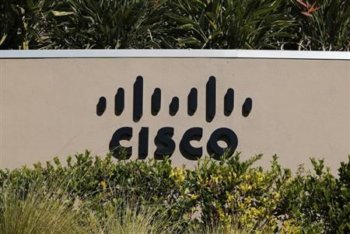Outlook: positive economic trends says Cisco CEO
August 2009
Cisco Systems CEO John Chambers says the economic recession that’s gripped the world for the past year may have reached a tipping point in the last three months, as he sees the company’s corporate customers return to spending more on technology.
Even though Cisco‘s sales and profits were down drastically from a year ago for the fourth fiscal quarter of 2009, Chambers said Wednesday during the conference call with investors and analysts that orders for new products grew for the first time in several quarters.
“We saw a number of positive signs in the economy and in our business over the fourth quarter,” Chambers said. “It’s still early, but if we continue to see these positive trends in one or two more quarters, there’s a good chance we say the tipping point occurred in the fourth quarter.”
Cisco reported fourth quarter profits of $1.1 billion or 19 cents a share. This was down from a profit of $2 billion or 33 cents a share during the same quarter a year ago. Revenue fell 18 percent to $8.5 billion compared to the same quarter a year ago when the company reported revenue of $10.4 billion.
The company’s results were in-line or slightly above what analysts had predicted.
Cisco, which makes equipment that powers the Internet and most corporate networks around the world, is seen as a bellwether in the tech industry. Because the company’s products are used by almost every large company, government entity, broadband and telephone service provider, and thousands of small and medium businesses around the globe, the company has a strong pulse on the economy and technology spending in general.
Chambers, himself, is viewed as somewhat of a technology oracle. And investors listen carefully to what he says and the tone of his comments for hints at what to expect from other companies in the technology sector. Cisco was one of the first companies, well over a year ago, to see the economic downturn coming. The company had noted a slow down in spending from some of its biggest corporate customers in the U.S. and Canada.
So what are the signs of recovery that Cisco is seeing? During the call Chambers explained that Cisco’s quarters are remarkably predictable from year to year in terms of sequential quarterly growth. He said he often expects at least 10 percent growth in orders from quarter to quarter. But in the first half of fiscal 2009, the company actually saw orders drop about 15 percent. Business appeared to stabilize in the third fiscal quarter, which he noted during the company’s previous quarterly conference call in May.
In the fourth quarter of 2009, Chambers said he saw an actual change. Orders reverted back to normal trends and the company started seeing sequential growth in its business again.
But Chambers and his team cautioned that one quarter of positive growth does not make a trend, even though the company is hopeful that the upward momentum will continue. Still, Chambers noted some weak spots. While business trends were positive during the quarter in the U.S., Asia, and Japan, they were not so good in Europe. In particular, the U.K., Spain, and Italy are still showing signs of trouble. Germany, he noted, is in a little better shape.
In an interview after the earnings call, Cisco’s Chief Financial Officer Frank Calderoni said Cisco is still seeing weakness in sales to service provider customers, too.
“Service providers continue to be challenged,” Calderoni said. “For a number of quarters they’ve been focused on reducing capital expenditures. But it’s also a matter of timing. The service provider market was still growing when we saw early signs of weakness in enterprise sales. So it might take a little longer to see them spending more again.”
What all of this boils down to is a return to growth and a return to spending on technology, which is likely a good sign for the economy as a whole. Neither Chambers nor Calderoni believe that the recovery will be quick. In fact, the company is only predicting revenue growth of between 1 to 3 percent from the first quarter of fiscal 2010 to the second quarter of fiscal 2010. But any growth at this point is good.
And as the economy starts to make its recovery, however slow, Chambers said he is focused more than ever on growing what he calls “adjacent” markets. During the conference call he highlighted a couple of new businesses he sees as potential billion dollar businesses in the future.
The first is smart grid technology. Cisco is helping energy companies better manage their power grids and resources via IP technology. And the next adjacent market is called “Connected Communities.” Cisco is developing new technology and repackaging existing technology to help cities and communities build and refurbish buildings with connected communications technology to better manage energy use and other resources.





